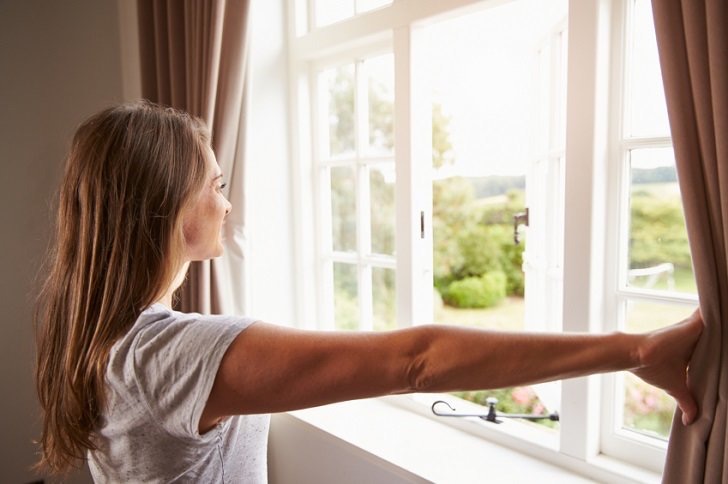Generally, regularly cleaning your home will help to keep allergies at bay. But cleaning isn’t something we are born knowing how to do. It is something we need to be taught.
Some things like cleaning carpets, washing curtains, and changing your bedding are great ways to reduce the allergens in your home. Experts say that engineered wood flooring can help with the air quality of your home.

Springtime is one of the worst times for those with pollen allergies, it sticks to your shoes, and you track it into your house. If you feel escaping allergens is impossible, here are some tips to keep your home free of these irritants.
No Shoes In The House
When dust, dirt, grass, and pollen stick to the soles of your shoes, the best way to eliminate these common allergens is to remove your shoes at the door. Implement a no-shoes policy and use an inside mat to capture footwear as soon as you walk in the door.
During allergy season, vacuum this area frequently. Place a doormat outside (preferably a water-resistant coir mat) to wipe off shoes before crossing the threshold. A no-shoe policy has many benefits, like keeping your floors cleaner for longer!
Remove Carpeting
Your carpets are a magnet for allergens, dirt, mold, pet dander, and bacteria. Carpet fibers then trap these irritants in difficult-to-clean locations.
If removing your carpeting is not possible, make vacuuming a bi-weekly chore. You should also wash area rugs and floor mats weekly. Consider using your regular detergent with a splash of vinegar for a more thorough cleaning.
Clean Upholstery Regularly
Fabric upholstery, like carpet, attracts allergens. If your symptoms are severe, choose leather or faux leather. Pollen, dust, and dander should easily wash away. Otherwise, use a machine-washable covering and clean it once a week.
Keeping your upholstery clean will also help to maintain the colors and textures. Prolonged exposure to dirt and grease will degrade your furniture.
Carefully Choose Your House Plants
Indoor plants don’t usually have the pollen many allergy sufferers struggle with, and they may even help by filtering the air. Think carefully before choosing a plant; you want a plant that doesn’t have large quantities of pollen.
Speak to a plant expert for help reducing the number of male flowers as they release pollen into the air. Consider “perfect flowers” as they contain male and female parts, so the pollen is less likely to travel.
Insect-pollinated flowers are less likely to release pollen into the air. While flowers are amazing to smell, the more fragrant the plant, the more likely you react to it.
Cross-reactivity between indoor plants and common outdoor allergens is also possible, which means they may share identical proteins that cause you to sneeze. Explore your options if you’re determined to bring some greenery indoors to learn what works best for you.
Check out the top robot vacuums if you want to keep your floors effortlessly clean. Consider adding some extra allergy-friendly steps to your weekly cleaning schedule.
